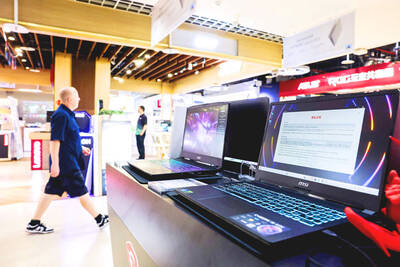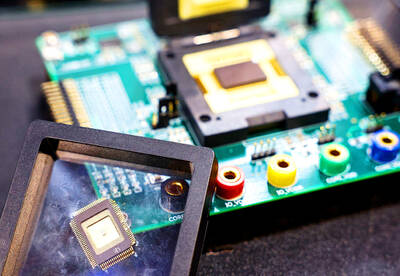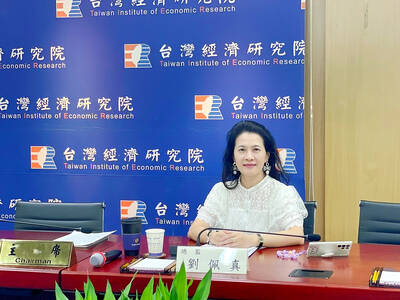Indonesia’s exports in April surprisingly weakened, tipping the country’s trade balance into its largest deficit in nine months and renewing stress on the fragile rupiah.
Recent signs of stability in the nation’s current account deficit and moderating inflation had helped to revive investor confidence ahead of presidential elections next month.
Inflation picked up last month, but largely met forecasts, underlining expectations that Bank Indonesia will likely leave interest rates unchanged in the near term to continue bolstering the economy as growth slows, analysts said.
The G20 economy has kept policy tight and taken steps to dampen imports to shrink the current account deficit, which had ballooned last year and sparked capital outflows.
Indonesia’s trade balance slipped to a US$1.97 billion deficit in April, government data showed yesterday, after two straight months of surpluses, and confounding analysts’ expectations for a US$220 million surplus. The trade deficit was larger in July last year when it was US$2.3 billion.
“We had expected a sharp deterioration in Indonesia’s trade balance over April, but the actual deterioration was truly shocking,” ANZ’s Asia chief economist Glenn Maguire said.
He said export growth remained weak due to softer prices for key commodity and manufactured exports. And firm imports may be due to a combination of lagged foreign exchange effects and foreign direct investment inflows from a buildup in capacity.
“The external position is likely to remain negatively pressured in coming months if our assessment of these dynamics proves true,” Maguire said.
Others attributed imports to an increase in shopping and purchases, as Indonesians prepare for celebrations after the Ramadan fasting month.
Exports in April dropped 3.16 percent against expectations in a Reuters poll of 3.5 percent growth. Imports eased 1.26 percent compared with expectations for a fall of 7.7 percent.
The rupiah hit its weakest in more than three months yesterday, after Indonesia’s unexpectedly large trade deficit. It fell as much as 0.9 percent to 11,775 per US dollar.
“By all measures, Indonesia’s domestic demand remains resilient, and probably more so now that consumers and businesses have adjusted to the rupiah exchange rate,” DBS economist Gundy Cahyadi said.
He said the current account may continue to remain under pressure, although it still looked like the current account deficit could still come in below 3 percent of GDP this year.
Annual inflation last month picked up to 7.32 percent due to higher food costs, but matched forecasts for 7.3 percent, the data showed. On a month-on-month basis, the consumer price index was up 0.16 percent.
Bank Indonesia has maintained its policy rate at 7.5 percent since December last year after increasing it by 175 basis points between June to November to support the rupiah.
Meanwhile, the export outlook may brighten in the coming months as manufacturing activity surged to a record high last month, an HSBC Markit purchasing managers’ index survey showed yesterday.

IN THE AIR: While most companies said they were committed to North American operations, some added that production and costs would depend on the outcome of a US trade probe Leading local contract electronics makers Wistron Corp (緯創), Quanta Computer Inc (廣達), Inventec Corp (英業達) and Compal Electronics Inc (仁寶) are to maintain their North American expansion plans, despite Washington’s 20 percent tariff on Taiwanese goods. Wistron said it has long maintained a presence in the US, while distributing production across Taiwan, North America, Southeast Asia and Europe. The company is in talks with customers to align capacity with their site preferences, a company official told the Taipei Times by telephone on Friday. The company is still in talks with clients over who would bear the tariff costs, with the outcome pending further

NEGOTIATIONS: Semiconductors play an outsized role in Taiwan’s industrial and economic development and are a major driver of the Taiwan-US trade imbalance With US President Donald Trump threatening to impose tariffs on semiconductors, Taiwan is expected to face a significant challenge, as information and communications technology (ICT) products account for more than 70 percent of its exports to the US, Chung-Hua Institution for Economic Research (CIER, 中華經濟研究院) president Lien Hsien-ming (連賢明) said on Friday. Compared with other countries, semiconductors play a disproportionately large role in Taiwan’s industrial and economic development, Lien said. As the sixth-largest contributor to the US trade deficit, Taiwan recorded a US$73.9 billion trade surplus with the US last year — up from US$47.8 billion in 2023 — driven by strong

A proposed 100 percent tariff on chip imports announced by US President Donald Trump could shift more of Taiwan’s semiconductor production overseas, a Taiwan Institute of Economic Research (TIER) researcher said yesterday. Trump’s tariff policy will accelerate the global semiconductor industry’s pace to establish roots in the US, leading to higher supply chain costs and ultimately raising prices of consumer electronics and creating uncertainty for future market demand, Arisa Liu (劉佩真) at the institute’s Taiwan Industry Economics Database said in a telephone interview. Trump’s move signals his intention to "restore the glory of the US semiconductor industry," Liu noted, saying that

AI: Softbank’s stake increases in Nvidia and TSMC reflect Masayoshi Son’s effort to gain a foothold in key nodes of the AI value chain, from chip design to data infrastructure Softbank Group Corp is building up stakes in Nvidia Corp and Taiwan Semiconductor Manufacturing Co (TSMC, 台積電), the latest reflection of founder Masayoshi Son’s focus on the tools and hardware underpinning artificial intelligence (AI). The Japanese technology investor raised its stake in Nvidia to about US$3 billion by the end of March, up from US$1 billion in the prior quarter, regulatory filings showed. It bought about US$330 million worth of TSMC shares and US$170 million in Oracle Corp, they showed. Softbank’s signature Vision Fund has also monetized almost US$2 billion of public and private assets in the first half of this year,